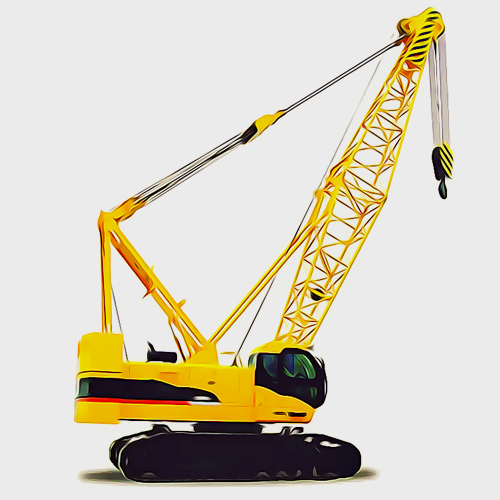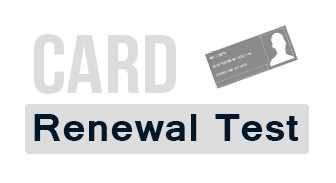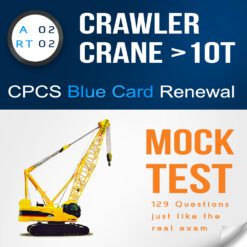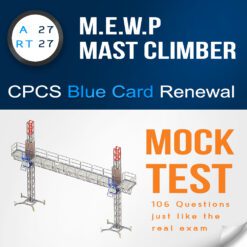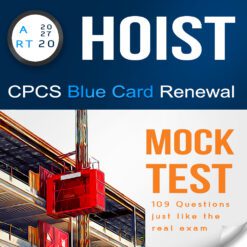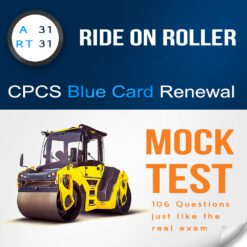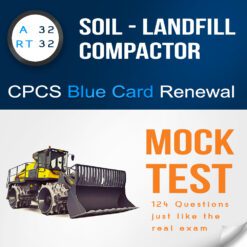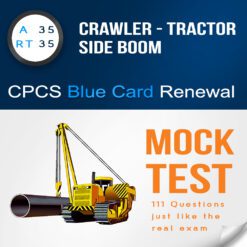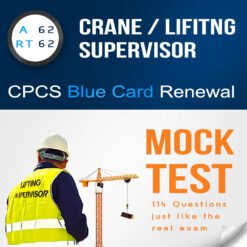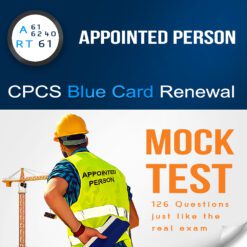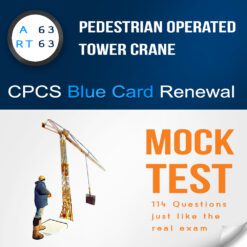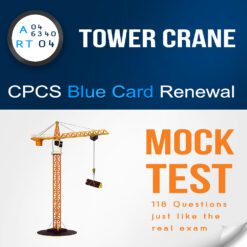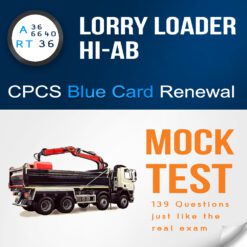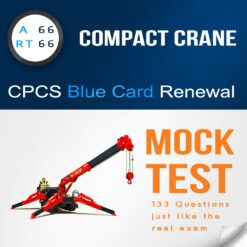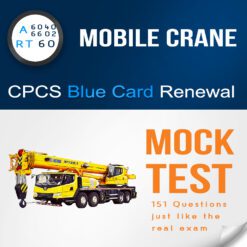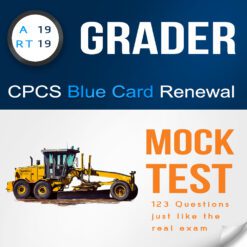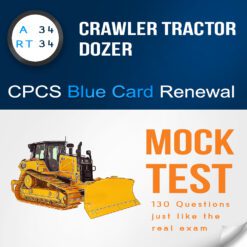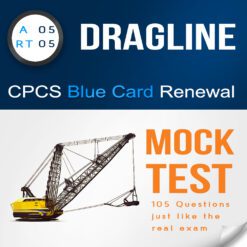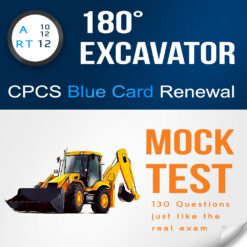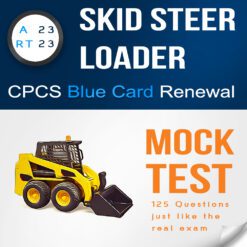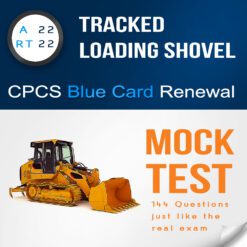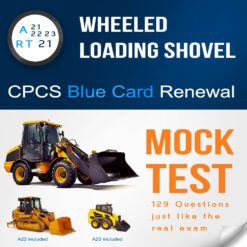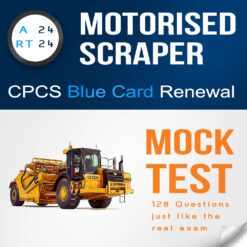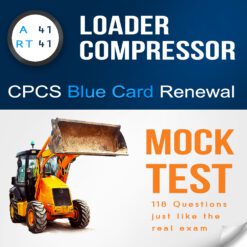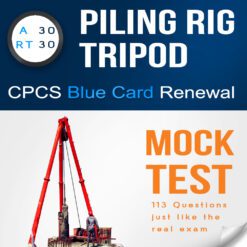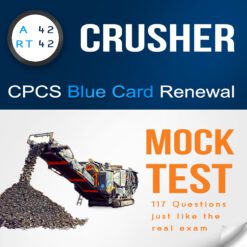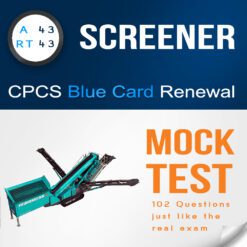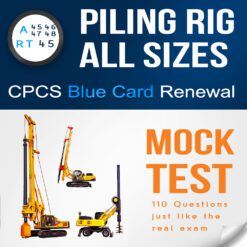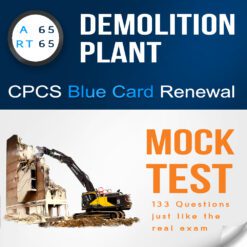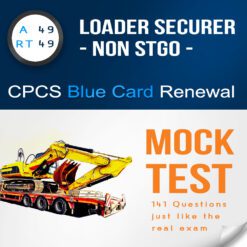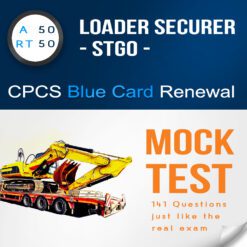- Why is lowering the jib of a tower crane particularly important at the end of a shift?
- A) To save energy
- B) To prevent wear and tear on the jib
- C) To facilitate crane inspections
- D) To allow the tower crane to weather vane in response to wind direction
Correct Answer: D) To allow the tower crane to weather vane in response to wind direction
- What is the potential consequence if one or both tracks of a crawler crane start sinking?
- A) Improved crane stability
- B) Crane becoming more efficient
- C) Exceeding the maximum radius and potential overturn
- D) No impact on crane operations
Correct Answer: C) Exceeding the maximum radius and potential overturn
- What does the formula D + d ≥ 2h represent with regards to trench excavations?
- A) The maximum ground slope for outrigger stability
- B) The minimum undercut depth for access
- C) The minimum distance from the edge for equipment
- D) The maximum depth for personnel access
Correct Answer: C) The minimum distance from the edge for equipment
- When must RCIs never be overridden?
- A) Only during diagnostic testing
- B) During routine crane maintenance
- C) During lifting operations
- D) Only during operator training
Correct Answer: C) During lifting operations
- What is the recommended criteria for temporary or inbuilt access ladders?
- A) Rungs must be entirely smooth for easy cleaning
- B) The rung must provide insufficient foot grip to minimize slipping
- C) The center of the foot should not reach the rung
- D) There should be sufficient foot penetration on each rung, and the rung must provide sufficient foot grip to minimize slipping
Correct Answer: D) There should be sufficient foot penetration on each rung, and the rung must provide sufficient foot grip to minimize slipping
- When must ground conditions be checked for a crawler crane?
- A) Only during routine crane maintenance
- B) Before carrying out static lifting duties
- C) Only during pick and carry duties
- D) After a crane has exceeded the maximum radius
Correct Answer: B) Before carrying out static lifting duties
- What is the potential consequence of slewing too fast with a load, especially near the rated capacity?
- A) Improved load stability
- B) Reduced crane wear and tear
- C) Crane becoming more efficient
- D) Load overshooting the landing place and striking a structure or object
Correct Answer: D) Load overshooting the landing place and striking a structure or object
- What does the Rated Capacity Indicator (RCI) on a crane provide warnings for?
- A) Only for weather conditions
- B) Approaching maximum rated capacity
- C) Operator fatigue
- D) Routine maintenance
Correct Answer: B) Approaching maximum rated capacity
- What are the requirements if the lifting of persons is to take place?
- A) Only a plan for evacuation
- B) Additional considerations such as sixmonthly checks and a plan for evacuation
- C) Only regulatory paperwork
- D) No specific requirements
Correct Answer: B) Additional considerations such as sixmonthly checks and a plan for evacuation
- Where should the hook of a crawler crane be placed when lifting a load?
- A) Anywhere above the load
- B) Directly above the centre of gravity for the load
- C) At the centre of the load
- D) As close as possible to the load’s edge
Correct Answer: B) Directly above the centre of gravity for the load
- What parameter in the formula D + d ≥ 2h has a value of zero for vertical trench walls?
- A) D the horizontal distance
- B) d the sloped distance
- C) h the trench height
- D) ≥ the equal to or greater than sign
Correct Answer: B) d the sloped distance
- Why does lifting guidance advise minimizing the moving of a suspended load overhead?
- A) To reduce crane wear and tear
- B) To increase the efficiency of the lifting operation
- C) To avoid obstructing the crane operator’s view
- D) To minimize the risk to workers and pedestrians
Correct Answer: D) To minimize the risk to workers and pedestrians
- Why is it important for temporary or inbuilt access ladders to provide sufficient foot grip?
- A) To increase ladder portability
- B) To enhance ladder aesthetics
- C) To minimize wear and tear on the ladder
- D) To minimize slipping and ensure safety
Correct Answer: D) To minimize slipping and ensure safety
- What is a legislative requirement for lifting operations?
- A) Devising a lift plan
- B) Thorough examinations
- C) Daily checks
- D) Operator training
Correct Answer: A) Devising a lift plan
- If a trench has a sloped edge, where is the horizontal distance measured from?
- A) The trench bottom to the crane
- B) From the foot to the top edge of the slope
- C) The trench centre to the top of the trench
- D) Ground level to the highest point
Correct Answer: B) From the foot to the top edge of the slope
